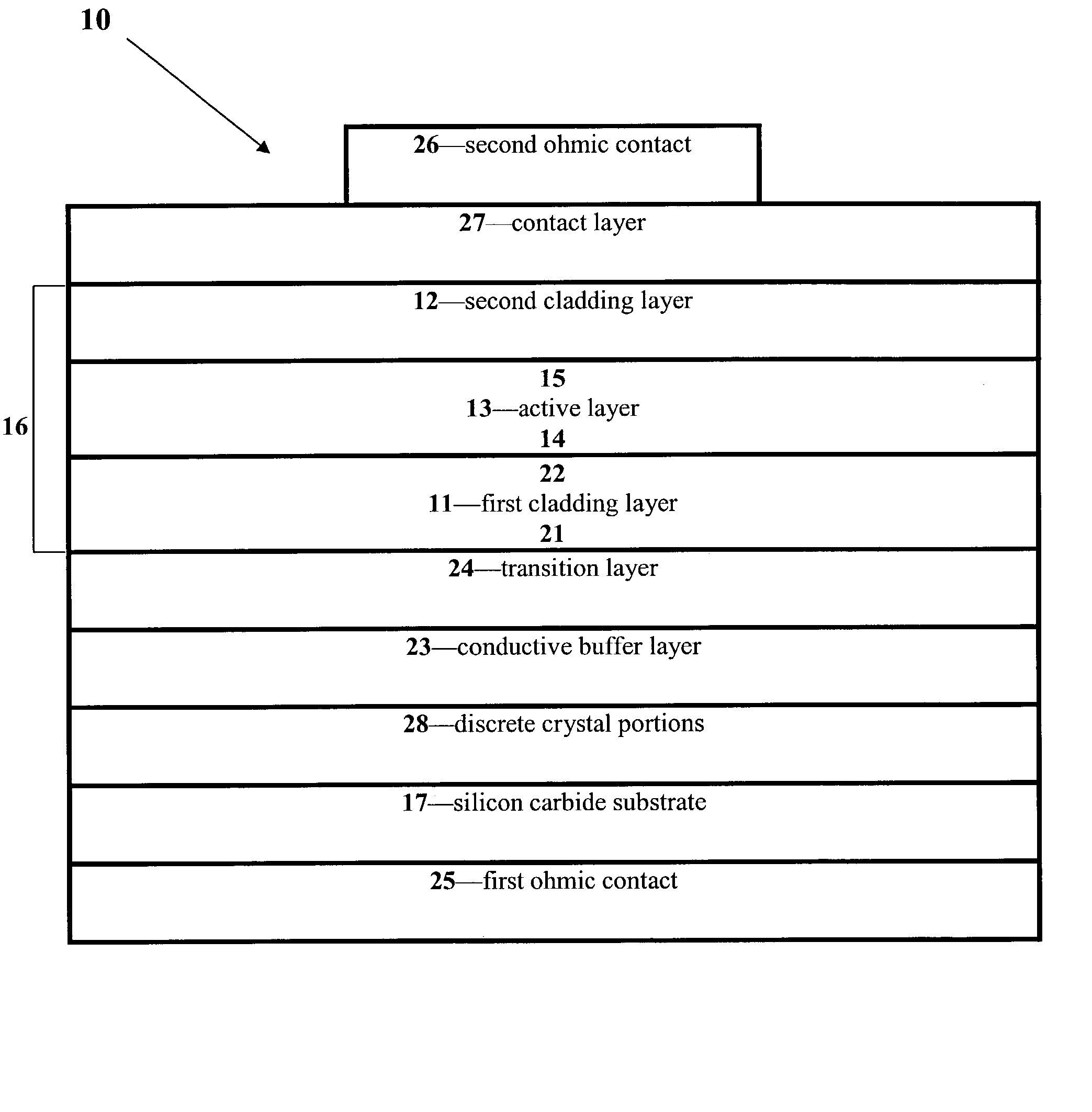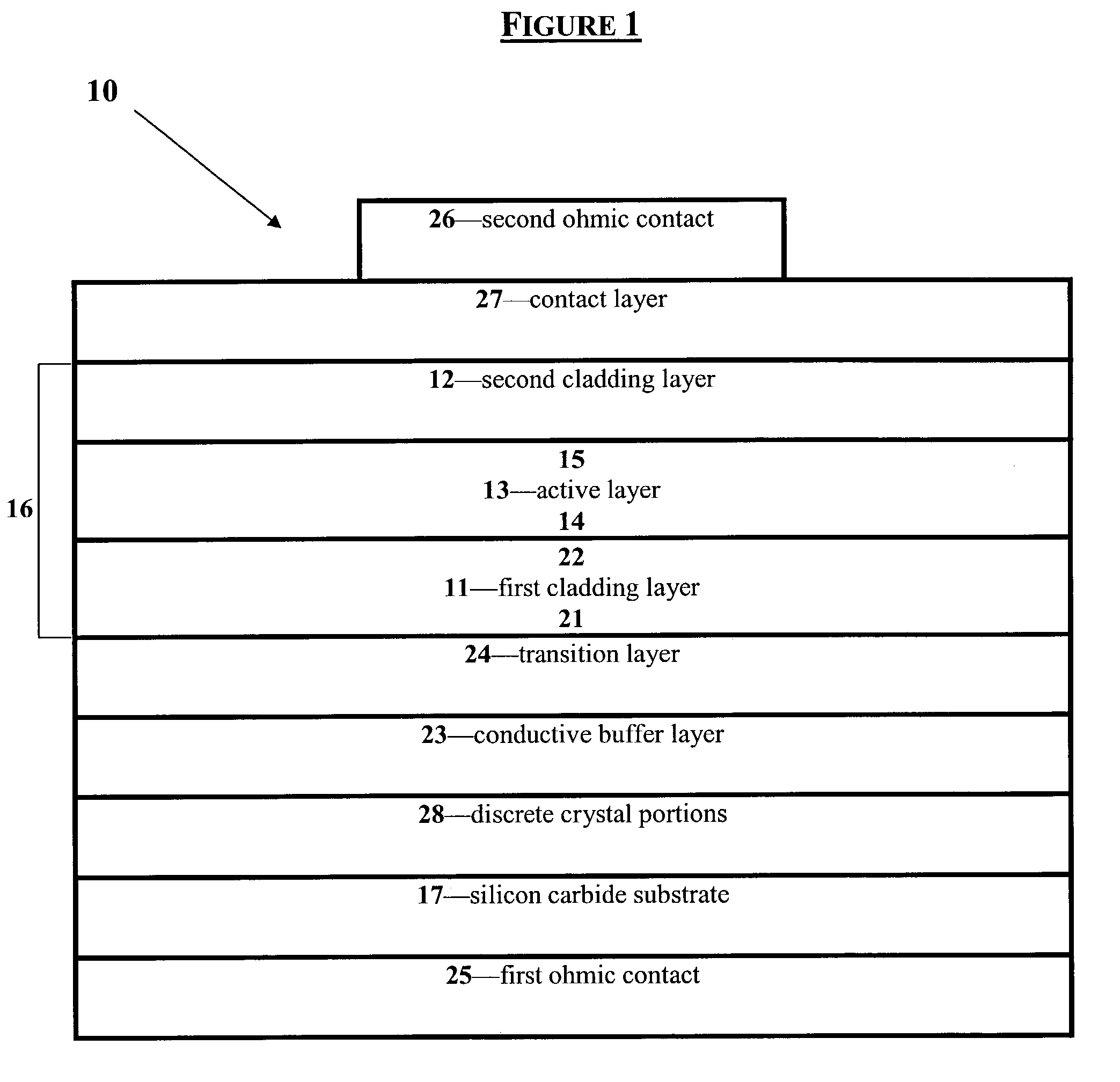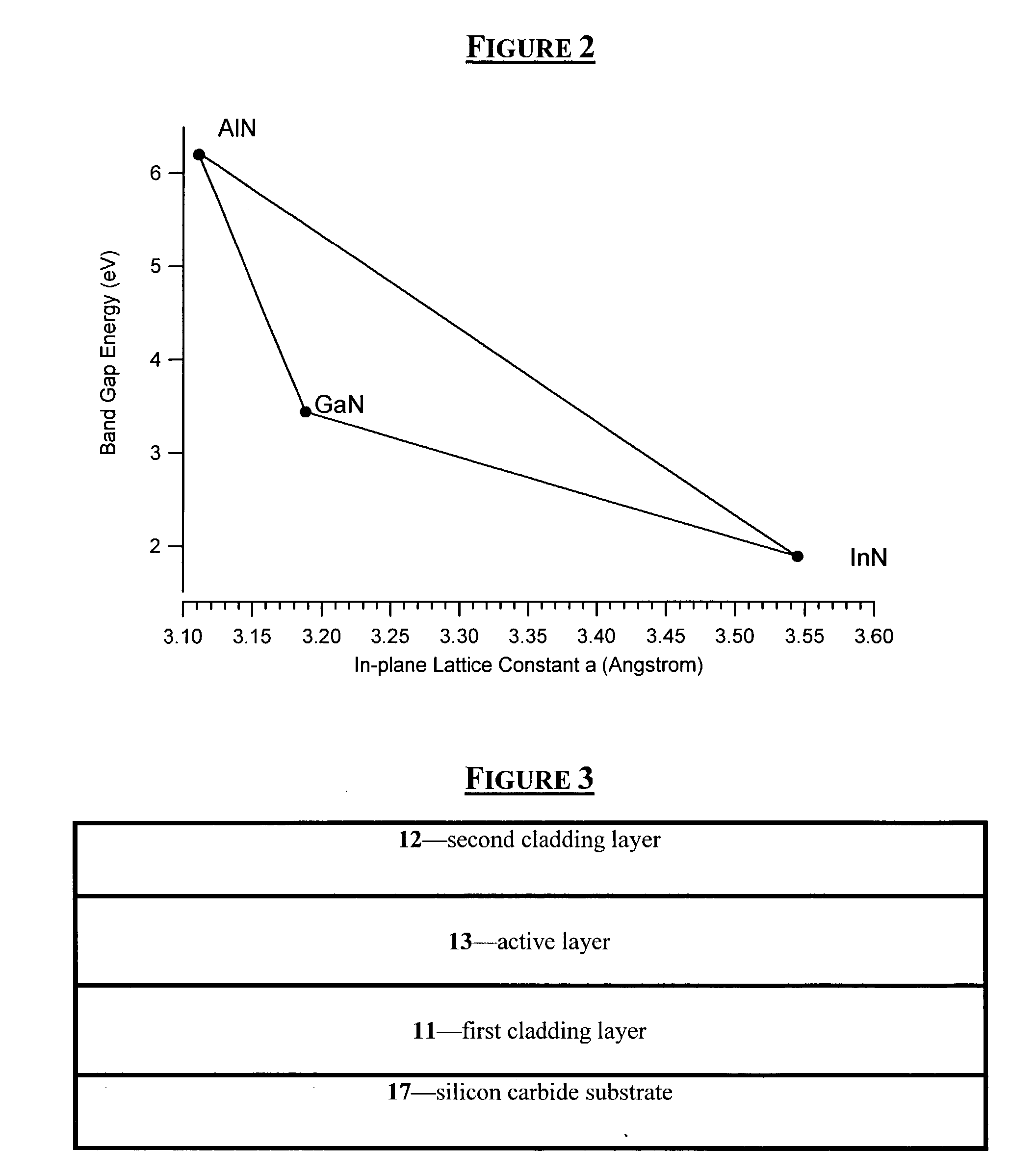Group III nitride light emitting devices with progressively graded layers
a technology of nitride and light, applied in the direction of lasers, semiconductor lasers, solid-state devices, etc., can solve the problems of reducing the light emitting efficiency of the device, silicon, gallium phosphide, or gallium arsenide are unsuitable for producing blue light, and the functional constraints of the led are somewhat larg
- Summary
- Abstract
- Description
- Claims
- Application Information
AI Technical Summary
Benefits of technology
Problems solved by technology
Method used
Image
Examples
example 1
[0056] The cladding layers for a blue LED (425 nm<.lambda.<480 nm) must have a band-gap energy greater than that of the blue active layer (2.58-2.92 eV). For the ternary In.sub.xAl.sub.1-xN, the bandgap energy of the ideal crystal remains a matter of research and debate. This is primarily due to the difficulty in growing high quality, uniform epitaxial layers of the solid solution that are thick enough (approximately 0.2 .mu.m) for optical transmission measurements to determine the bandgap energy. From current data, In.sub.0.17Al.sub.0.83N has a bandgap energy of 2.9-3.0 eV. See S. Yamaguchi, M. Kariya, S. Nitta, T. Takeuchi, C. Wetzel, H. Amano, and I. Akasaki, Appl. Phys. Lett. 76 876 (2000). Therefore, cladding layers for blue LEDs should have an indium molar fraction of less than 0.17. See K. S. Kim, A. Saxler, P. Kung, M. Razeghi, and K. Y. Kim, Appl. Phys. Lett. 71 800 (1997).
example 2
[0057] Blue light emissions are produced for the ternary In.sub.xAl.sub.1-xN between 0.14<x<0.21, with In.sub.0.17Al.sub.0.83N producing luminescence peaked at 450 nm and In.sub.0.22Al.sub.0.78N at 500 nm. See S. Yamaguchi, M. Kariya, S. Nitta, T. Takeuchi, C. Wetzel, H. Amano, and I. Akasaki, Appl. Phys. Lett. 76 876 (2000). Reducing the indium molar fraction to less than 0.14 will produce light at shorter wavelengths, thereby permitting emissions of 425 nm. For green emission (e.g., 500<.lambda.<575 nm), the indium molar fraction should be between about 0.22<x<0.35.
[0058] It will be understood by those of skill in the art that these are bulk emission values and that growth of the material as quantum wells will produce quantum confinement that will blue shift these emission wavelengths.
[0059] It will be further appreciated by those of ordinary skill in the art that, as used herein, the concept of one layer being "between" two other layers does not necessarily imply that the three l...
PUM
 Login to View More
Login to View More Abstract
Description
Claims
Application Information
 Login to View More
Login to View More - R&D
- Intellectual Property
- Life Sciences
- Materials
- Tech Scout
- Unparalleled Data Quality
- Higher Quality Content
- 60% Fewer Hallucinations
Browse by: Latest US Patents, China's latest patents, Technical Efficacy Thesaurus, Application Domain, Technology Topic, Popular Technical Reports.
© 2025 PatSnap. All rights reserved.Legal|Privacy policy|Modern Slavery Act Transparency Statement|Sitemap|About US| Contact US: help@patsnap.com



